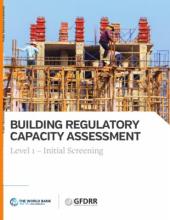Land Library
Welcome to the Land Portal Library. Explore our vast collection of open-access resources (over 74,000) including reports, journal articles, research papers, peer-reviewed publications, legal documents, videos and much more.
/ library resources
Showing items 28 through 36 of 4704.These case studies were developed as part of the World Bank's Results Monitoring and Evaluation for Resilience Building Operations (ReM&E) project, which aims to develop and increase the application of systematic, robust, and useful approaches to monitoring and evaluation (M&E) for resili
This paper revisits the decades-old puzzle of the inverse plot-size productivity relationship, which states that land productivity decreases as plot size increases.
Research has provided robust evidence for the use of GPS technology to be the scalable gold standard in land area measurement in household surveys. Nonetheless, facing budget constraints, survey agencies often seek to measure with GPS only plots within a given radius of dwelling locations.
Urbanization is simultaneously a major driver of development, wealth creation, and poverty reduction, as well as one of the most pressing challenges of the 21st century.
Urbanization is simultaneously a major driver of development, wealth creation, and poverty reduction, as well as one of the most pressing challenges of the 21st century. Urbanization can and should be embraced as an opportunity to reduce poverty.
This report was drafted by a working group of United Nations entities, the World Bank, and other stakeholders to suggest a common understanding of the blue economy; to highlight the importance of such an approach, particularly for small island developing states and coastal least developed countri
This paper captures early observations by the World Bank Forests and Landscapes Climate Finance Funds in engaging the private sector, particularly multinational companies involved in global agricultural commodity supply chains, in the context of emission reductions programs to address land use ch
Using firm-level data covering 709 cities in 128 countries, this paper examines the role of a comprehensive list of business environment variables at the subnational level in explaining firm employment and productivity growth.
Governance quality plays a key role in private sector development: competent bureaucrats not only create good policies and regulations, but also effectively implement them to shape the business environment.









